Looking for the perfect Ground Beef Chili with Beans recipe? This easy-to-follow guide delivers delicious results every time with clear measurements, practical tips, and customizable options. Whether you're cooking for weeknight dinners or game day, this proven recipe balances rich flavors with simple techniques anyone can master.
Yield: 6 servings | Prep time: 15 minutes | Cook time: 1 hour 15 minutes
Classic Ground Beef Chili with Beans Recipe
Ingredients you'll need:
- 1.5 lbs ground beef (80/20 blend)
- 1 large yellow onion, diced
- 1 bell pepper, diced
- 3 cloves garlic, minced
- 2 (15oz) cans beans (kidney and black), drained and rinsed
- 1 (28oz) can diced tomatoes
- 2 tbsp tomato paste
- 2 cups beef broth
- 2 tbsp chili powder
- 1 tbsp cumin
- 1 tsp smoked paprika
- 1 tsp salt
- ½ tsp black pepper
- Optional: 1 chipotle pepper in adobo sauce for extra heat
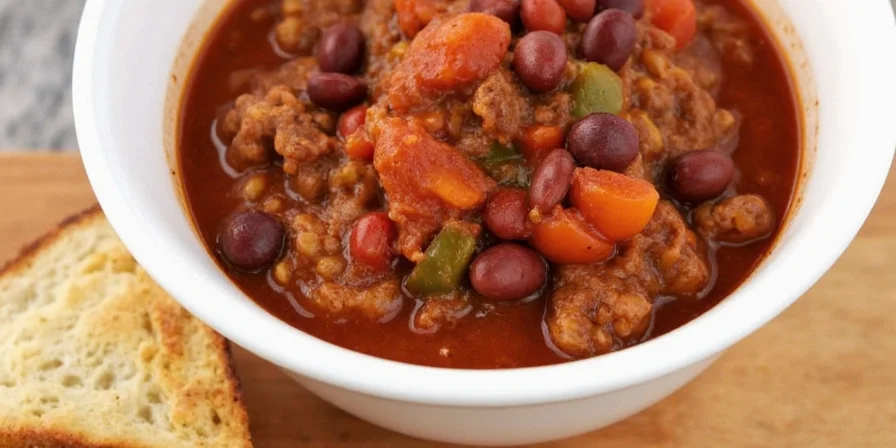
Step-by-Step Instructions
- Brown the beef: Heat 1 tbsp oil in a large pot over medium-high heat. Add ground beef, breaking it apart with a spoon. Cook until no pink remains (about 5-7 minutes). Drain excess fat.
- Sauté vegetables: Add onion, bell pepper, and garlic to the pot. Cook until softened (5 minutes).
- Add spices: Stir in chili powder, cumin, smoked paprika, salt, and pepper. Cook for 1 minute until fragrant.
- Combine ingredients: Add tomato paste, diced tomatoes, beans, beef broth, and optional chipotle pepper. Stir well.
- Simmer: Bring to a boil, then reduce heat to low. Cover and simmer for 45-60 minutes, stirring occasionally.
- Adjust seasoning: Taste and add more salt, spices, or heat as needed before serving.
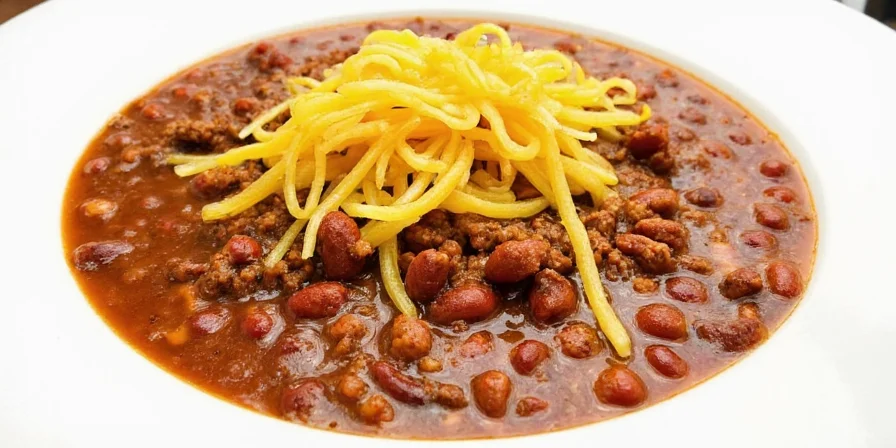
Spice Guide for Perfect Flavor Balance
Get the right heat level and flavor profile with these simple spice ratios:
| Spice | Flavor Profile | Heat Level | Basic Amount |
|---|---|---|---|
| Cumin | Earthy, warm | Mild | 1 tbsp |
| Chili Powder | Smoky, earthy | Mild | 2 tbsp |
| Smoked Paprika | Smoky, sweet | Mild | 1 tsp |
| Chipotle in Adobo | Smoky, spicy | Medium | 1 pepper |
| Cayenne Pepper | Sharp, hot | High | ¼-½ tsp |
Pro Tips for Better Chili
- Drain beans: Always rinse canned beans to remove excess sodium and starch
- Brown properly: Don't overcrowd the pot when browning meat to get proper caramelization
- Toast spices: Cooking spices in oil for 1 minute before adding liquids enhances flavor
- Simmer time: At least 45 minutes of simmering allows flavors to blend properly
- Overnight secret: Chili tastes even better the next day as flavors continue to meld
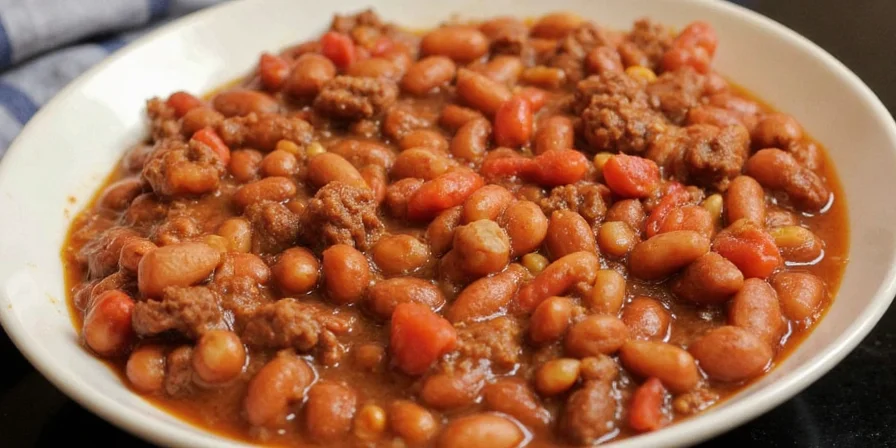
Customization Ideas
Make this recipe your own with these easy variations:
- Milder version: Reduce chili powder to 1 tbsp and omit chipotle pepper
- Richer flavor: Add 1 oz dark chocolate during the last 15 minutes of cooking
- Extra depth: Stir in ¼ cup beer or coffee with the broth
- Creamier texture: Mash ½ cup of beans before adding to the pot
- Vegetable boost: Add corn, zucchini, or mushrooms with the vegetables
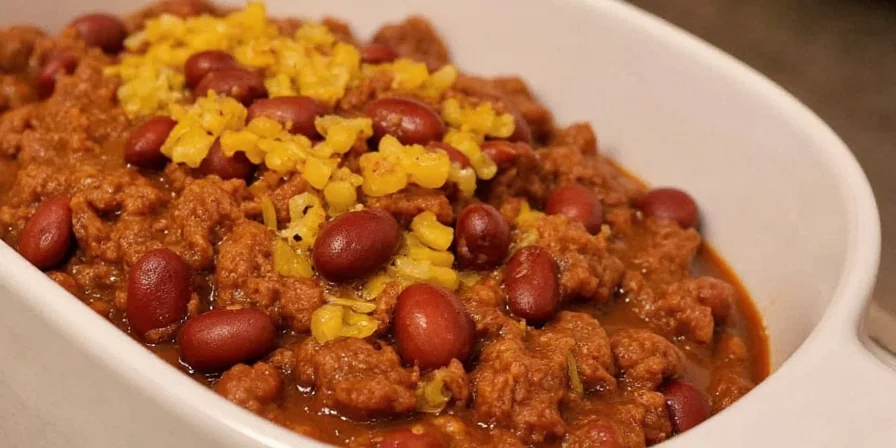
Perfect Pairings
Complete your meal with these serving suggestions:
- Cornbread: The classic pairing that soaks up chili perfectly
- Rice: Creates a hearty Tex-Mex style meal
- Toppings: Shredded cheese, sour cream, diced onions, or avocado
- Side salad: A fresh green salad balances the richness

Chili Style Comparison
Choose the approach that fits your needs:
| Chili Type | Key Features | Best For | Time Required |
|---|---|---|---|
| Classic Ground Beef | Beans, ground beef, tomato-based | Family dinners, beginners | 1 hour 15 minutes |
| Texas Style | No beans, chuck roast, deep flavor | Chili enthusiasts | 2-3 hours |
| Quick Weeknight | Ground beef, canned ingredients | Busy cooks | 45 minutes |
| Slow Cooker | All ingredients in one pot | Hands-off cooking | 6-8 hours |
Common Questions Answered
- Can I make this in a slow cooker?
- Yes! Brown the beef and sauté vegetables first, then transfer everything to your slow cooker and cook on low for 6-8 hours.
- Why is my chili too watery?
- Simmer uncovered for 15-20 minutes to reduce liquid, or mash some beans to thicken naturally.
- How do I reduce the heat level?
- Add a spoonful of sour cream or sprinkle with cheese before serving—dairy helps balance spiciness.
- Can I freeze chili?
- Absolutely. Store in airtight containers for up to 3 months. Thaw in the refrigerator overnight before reheating.
- What's the best ground beef for chili?
- 80/20 lean-to-fat ratio provides the best flavor and texture. Leaner beef may need added oil during cooking.
This Ground Beef Chili with Beans recipe delivers consistent, crowd-pleasing results with straightforward instructions anyone can follow. The simple spice ratios and practical tips make it easy to customize to your taste preferences. Whether you're cooking for a weeknight dinner or a gathering with friends, this reliable recipe will become your go-to for hearty, satisfying chili. Make a batch today and discover why this classic comfort food remains a favorite for home cooks everywhere.

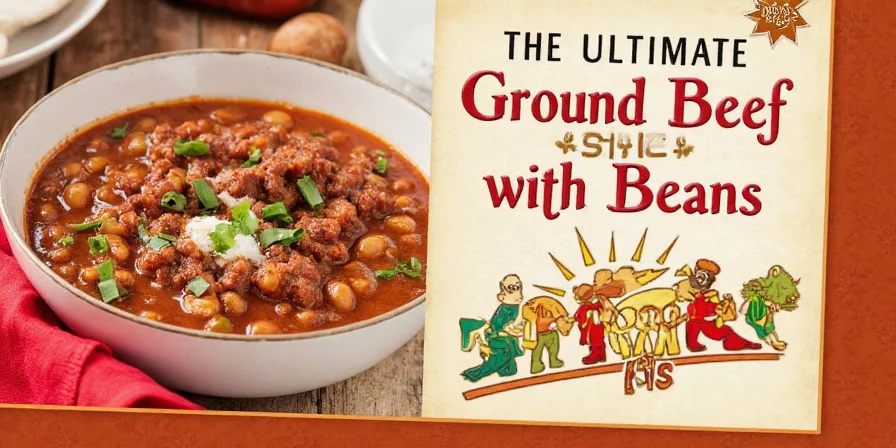









 浙公网安备
33010002000092号
浙公网安备
33010002000092号 浙B2-20120091-4
浙B2-20120091-4